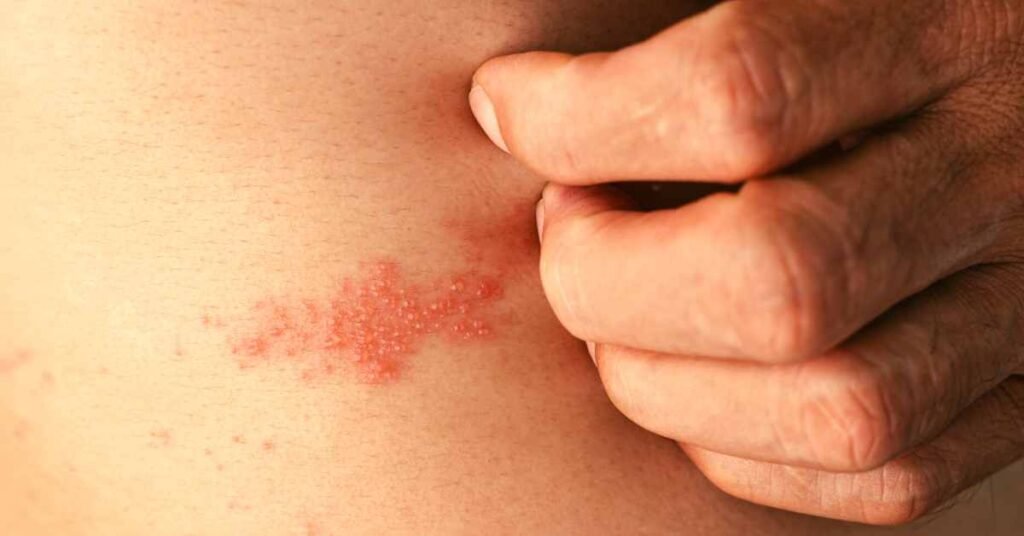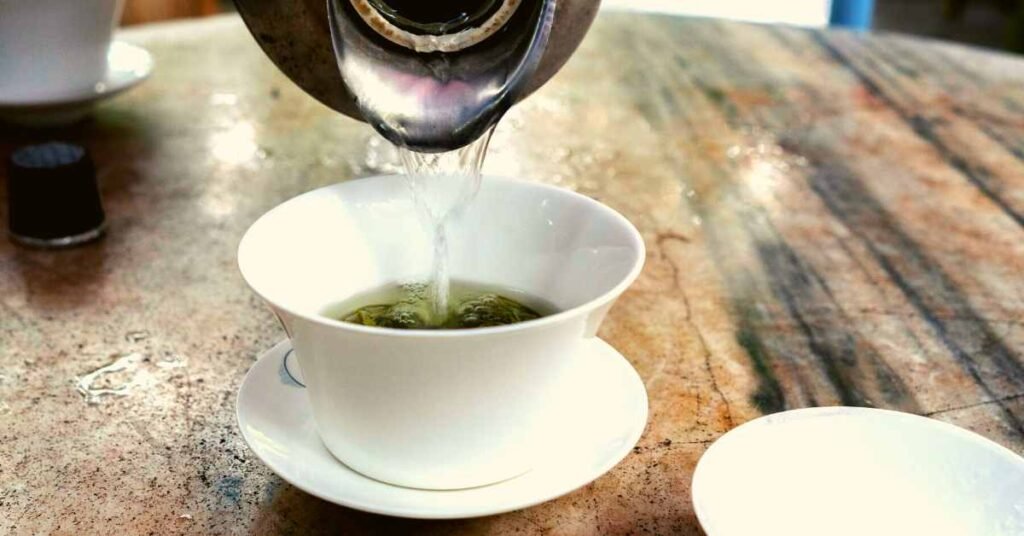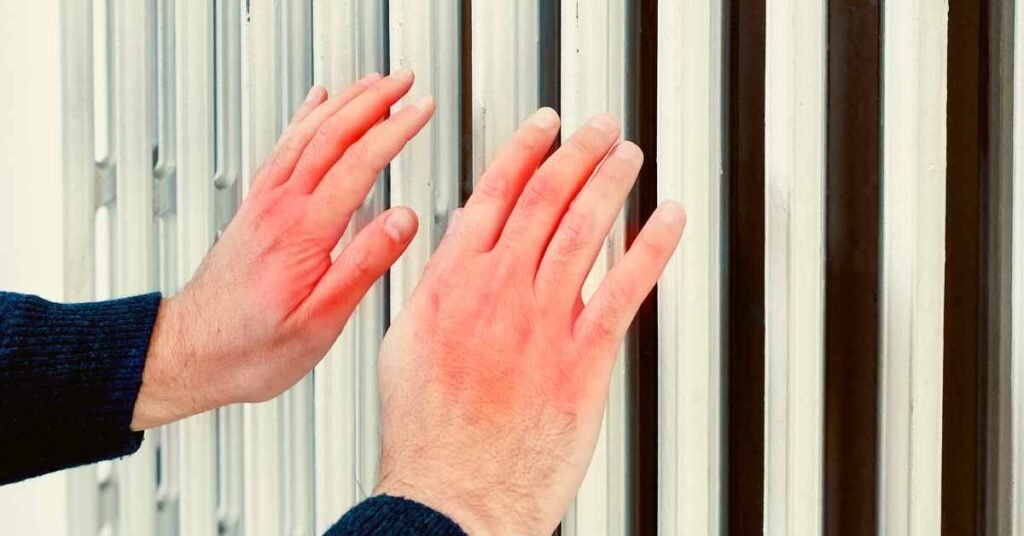Beyond its ability to enchant the senses and create moments of tranquility, tea also possesses therapeutic properties that extend to various health conditions.
One such condition that can find relief in the gentle embrace of tea is chilblains.
I n this article, we delve into the world of chilblains and explore the soothing effects of tea in alleviating its symptoms.
Understanding Chilblains

Chilblains, also known as pernio or perniosis, are a painful and inflammatory skin condition that occurs in response to repeated exposure to cold and humidity.
Typically affecting the extremities, such as fingers, toes, ears, and nose, chilblains manifest as red, itchy, and swollen areas on the skin.
The condition arises when the blood vessels narrow in response to cold, leading to poor circulation.
Upon rewarming, the blood vessels expand suddenly, causing leakage and inflammation in the surrounding tissues.
Chilblains are often associated with winter, but they can occur in any cold and damp environment.
Individuals with poor circulation, such as those with Raynaud’s disease or individuals who spend extended periods in cold, wet conditions, are more susceptible to chilblains.
Tea’s Therapeutic Properties
Tea, derived from the Camellia sinensis plant, is a treasure trove of compounds that contribute to its therapeutic qualities.
The primary components include polyphenols, catechins, theanine, and caffeine, each offering unique benefits for overall health.
When it comes to chilblains, tea’s inherent properties can play a pivotal role in mitigating the symptoms and providing relief.
Improved Circulation

Tea, particularly green tea, has been linked to improved blood circulation.
The polyphenols present in green tea have vasodilatory effects, meaning they help widen blood vessels, enhancing blood flow.
By promoting better circulation, tea may assist in preventing the vasoconstriction that contributes to chilblains.
Anti-Inflammatory Effects
Chilblains are characterized by inflammation in response to abrupt changes in temperature.
Tea’s polyphenols, specifically catechins, exhibit potent anti-inflammatory properties.
These compounds help reduce swelling, redness, and discomfort associated with chilblains, providing a natural and gentle remedy for the condition.
Antioxidant Protection
Tea is renowned for its rich antioxidant content, which plays a crucial role in neutralizing harmful free radicals in the body.
Antioxidants help protect the skin from oxidative stress, a factor that can exacerbate chilblains.
Regular consumption of tea may contribute to the overall health of the skin, minimizing the impact of environmental factors that trigger chilblains.
Tea Varieties for Chilblains Relief

Different types of tea offer unique benefits, and choosing the right one can enhance the soothing effects for chilblains.
Here are a few tea varieties that stand out in providing relief:
Green Tea
Green tea, unoxidized and rich in catechins, is celebrated for its anti-inflammatory and circulatory benefits. Regular consumption of green tea may aid in preventing chilblains by promoting better blood flow and reducing inflammation. Its delicate flavor and versatility make it an appealing option for those seeking a gentle remedy.
Ginger Tea
Known for its warming properties, ginger tea can be particularly beneficial for individuals dealing with chilblains. Ginger has natural anti-inflammatory and circulatory stimulant effects, which can help alleviate the symptoms associated with poor blood circulation and inflammation. The spicy warmth of ginger adds an extra layer of comfort to this therapeutic brew.
Peppermint Tea
Peppermint tea, with its refreshing and cooling properties, can provide relief for the discomfort caused by chilblains. The menthol in peppermint has a soothing effect on the skin, and the tea’s anti-inflammatory nature can help reduce redness and swelling. Additionally, the invigorating aroma of peppermint can offer a sensory respite, contributing to an overall sense of well-being.
Chamomile Tea
Chamomile tea, derived from the dried flowers of the chamomile plant, is renowned for its calming and anti-inflammatory properties. It can help soothe irritated skin and alleviate the itching associated with chilblains. The gentle nature of chamomile makes it a suitable option for those with sensitive skin, providing comfort without causing further irritation.
Incorporating Tea into Chilblains Care

While sipping on a cup of tea can certainly contribute to chilblains relief, there are additional ways to harness the therapeutic benefits of tea for this condition:
Warm Tea Compress
Brew a strong cup of your chosen tea and let it cool to a comfortable temperature. Soak a clean cloth or cotton ball in the tea and apply it to the affected areas. The combination of warmth and the tea’s healing properties can provide direct relief to chilblains.
Foot Soak
For chilblains affecting the feet, consider a soothing foot soak using tea. Prepare a concentrated brew and mix it with warm water in a basin. Soak your feet in the tea-infused water for 15-20 minutes. This can help improve circulation and reduce inflammation, providing a much-needed respite for chilblains.
Hydration from Within
In addition to external applications, hydrating from within is crucial for overall skin health. Ensure you drink an ample amount of tea throughout the day to maintain hydration levels. Herbal teas, such as chamomile or peppermint, can be particularly beneficial due to their hydrating and soothing properties.
Mindful Consumption
Tea is not just a beverage; it is a ritual that invites mindfulness. Engaging in the act of preparing and savoring tea can contribute to stress reduction, an important factor for conditions like chilblains that can be exacerbated by stress. Take the time to enjoy the aroma and flavors, creating a moment of calm amidst the challenges of managing chilblains.
Final Word

In the timeless tradition of tea, we find a therapeutic ally for chilblains, offering relief through its circulatory, anti-inflammatory, and antioxidant properties.
Whether sipped gently or applied topically, tea provides a holistic approach to managing the symptoms of chilblains.
As we embrace the warmth of our favorite brew, let us also acknowledge the centuries-old wisdom that continues to unfold in each comforting sip.
Tea, the ancient elixir, remains a steadfast companion in our journey toward healing and well-being.
MEDICAL DISCLAIMER
Itsnevernotteatime.com cannot and does not contain medical/health advice. The medical/health information is provided for general and educational purposes only and is not a substitute for professional advice.




